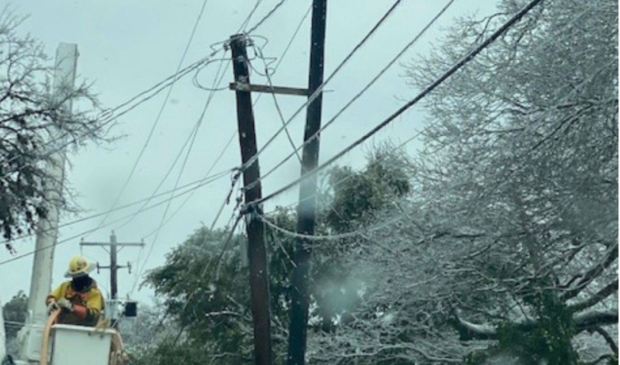City looks to mitigate wildfire hazards caused by Winter Storm Uri
Thursday, April 8, 2021 by
Jonathan Lee Some tree trimmings from power restoration efforts during Winter Storm Uri are still on the ground nearly two months after the storm, creating a potential wildfire hazard as wildfire season approaches.
Though trimmings in residential areas have been mostly picked up, trimmings under Austin Energy transmission lines in undeveloped areas have not.
“Nobody seems to know who’s responsible for clearing it,” Council Member Alison Alter told the Energy Oversight Committee on March 31.
Alter told the Austin Monitor that the debris is just one piece of the vegetation management puzzle – which itself is one strategy to prepare the city for wildfires.
Alter’s constituents identified tree trimmings left under transmission lines near Spicewood Springs Road, among other locations. The extent of the problem, however, remains unclear.
“We’re first trying to get a sense of the magnitude of the problem, and then see how we can tackle it,” she said.
In normal conditions, the utility’s contractors clear the brush. But doing so with snow, ice and frigid temperatures would have been too dangerous.
Austin Energy General Manager Jackie Sargent told the committee that restoring power is the top priority during storm events. “It’s typically not an industry practice … for the utilities to pick up the vegetation that’s trimmed to be able to restore power,” Sargent said.
Several city departments, as well as homeowners and landlords, share responsibility for clearing the huge mass of dead vegetation and fallen trees from February’s ice and record cold. “We know that if you leave debris on the ground, it can be a powder keg for wildfire,” Alter said.
Today, Council is set to approve a $7 million, two-year contract to help clear vegetation under Austin Energy transmission lines and other areas. The contract may later be extended three more years, for a total of $17.5 million.
“We’re gonna have to evaluate whether that’s enough,” Alter said, “or whether that usage needs to be accelerated.” The work around electric lines, she noted, is “very specialized.”
How well the city manages all the dead vegetation will, in part, determine how prepared Austin is for wildfires come summer and fall. According to a 2019 report, Austin is the fifth most at-risk city for wildfires in the country – and the most at-risk outside of California.
“I am really concerned about 2021 looking a lot like 2011,” Alter said. In 2011, a harsh winter followed by a hot summer and record drought caused the worst wildfire season in Austin’s history. “It’s really a matter of when, not if,” she said.
The city this year adopted a Wildland-Urban Interface Code that outlines construction and renovation standards in fire-prone areas.
Despite this progress, Alter said, “we’re not where I’d like us to be yet.” She plans to bring new wildfire safety initiatives as part of this year’s budget process.
Alter advised residents to call 311 and reach out to their Council member if they see any brush that needs clearing. “I would call more than one office at the moment, because part of what we’re trying to do is really identify where this debris is.”
The Austin Monitor’s work is made possible by donations from the community. Though our reporting covers donors from time to time, we are careful to keep business and editorial efforts separate while maintaining transparency. A complete list of donors is available here, and our code of ethics is explained here.
You're a community leader
And we’re honored you look to us for serious, in-depth news. You know a strong community needs local and dedicated watchdog reporting. We’re here for you and that won’t change. Now will you take the powerful next step and support our nonprofit news organization?









